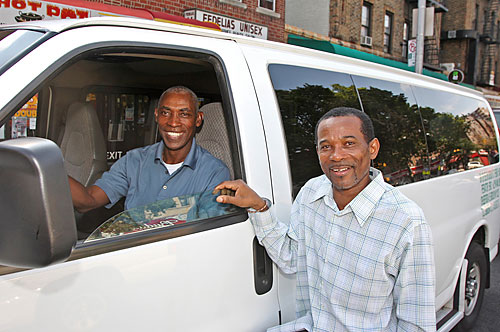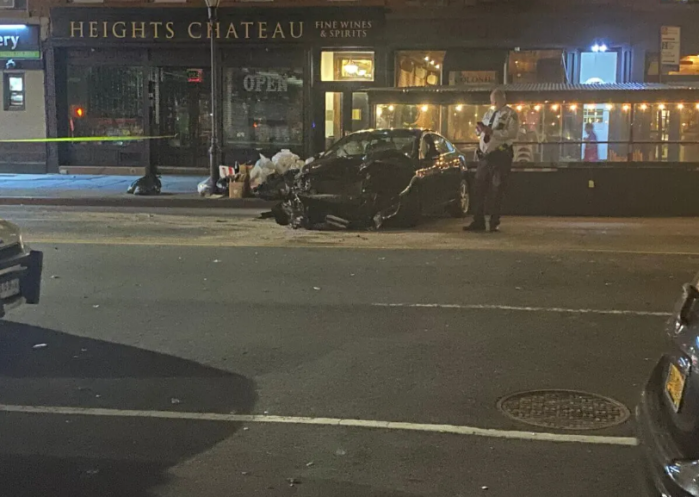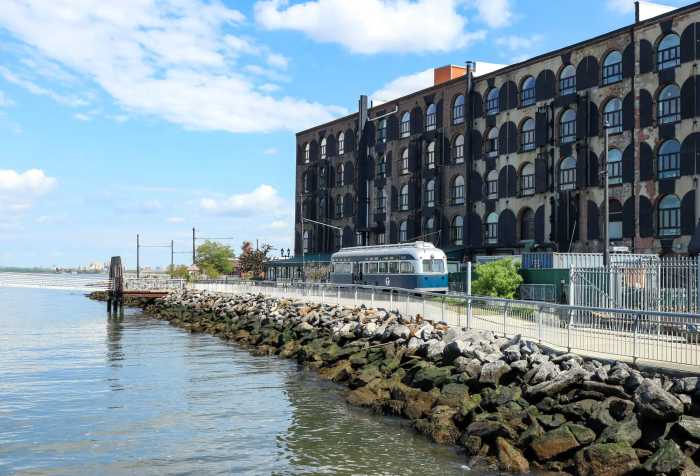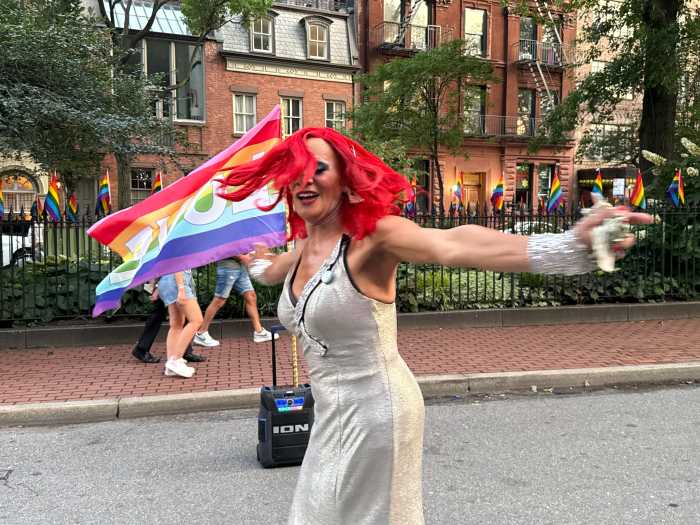A city proposal to provide shuttle service on bus lines killed by the MTA could flood area streets with dollar vans.
Under the controversial Taxi and Limousine Commission initiative to bring private mini-buses to defunct MTA routes, the vans will have marked pick-up points but are under no obligation to stick to the marked route and will in fact be permitted to roam free throughout the service area.
“There is no fixed route,” read the small type on a map of the supposed pick-up stops along the former B71 route, whose van service is scheduled to begin on Monday.
The lack of a “fixed route” is worrying critics, who fear that the so-called dollar van drivers will go anywhere to find fares.
“They stop everywhere and they stop short,” charged Monique Verret, a member of Community Board 6’s Transportation Committee, which hosted Taxi and Limousine Commission Commissioner David Yassky last week.
On Sept. 27, the vans will make their debut in Brownstone Brooklyn along the former B71 bus route that traveled from Columbia Street in Carroll Gardens through Park Slope to Crown Heights.
Brownstone Brooklyn will be virgin territory for the vans, which typically operate along major thoroughfares such as Flatbush and Nostrand avenues. Some vans have a reputation for operating recklessly.
Yassky has said that the vans will stop at designated spots along the failed bus routes, adding a transportation alternative that has been lacking since the MTA cuts earlier this year — but whether the vans will do as their told is another story entirely.
After all, the MTA made its cuts based on the agency’s contention that ridership was too low to justify a dedicated bus line. Van drivers may come to that conclusion quickly, too.
Indeed, on Monday afternoon, when the van service began along the former B23 bus line in Kensington, we waited two hours in vain for a van at a designated stop at Cortelyou Road and Flatbush Avenue. It is unclear whether the van was not working the route or if the driver chose to make undesignated stops elsewhere in the neighborhood.
Yassky said the agency would carefully monitor the unsubsidized program and evaluate it in about six months, potentially making it permanent.
But one van operator said he wouldn’t need so much time to figure out if it will work for him.
Sulaiman Haqq, co-owner of the Brooklyn Van Lines, has been given the city contract for the former B71 route — and he predicts a rough road to solvency.
“This route has been abandoned for some time now, and people have grown accustomed to taking other forms of transportation,” he said.
Haqq said he is already hearing grumbling from group van operators in Queens, where the service began two weeks ago.
“They are pretty much complaining already that they can’t get any ridership to sustain their efforts,” he said, claiming he would “stick it out” in Brownstone Brooklyn for a few months.
“I’m prepared to put in some time. But time equates to money.”
The 20-passenger vans will cost $2 a ride, and, in theory operate from 6 am to 10 pm. They are supposed to make pickups every 15 minutes during peak hours.
But don’t expect city bus-type amenities.
There will be no transfers, and none of the vans will be handicapped accessible. Signs will be posted along the old route, alerting passengers where to hop a ride.
Yassky said the new program would be a “fun” experiment, but conceded the road to selecting a route operator was bumpy.
The Transit Workers Union quietly withdrew its ballyhooed plan to operate a private van service along the B71 route, leaving the city scrambling to find a replacement in time for the start of its pilot program.
“I was very disappointed that they backed out,” said Yassky. “Transit workers are highly professional and qualified, and I was eager to see them involved.”
He said the union — which initially blasted as “illegal” the plan to use private vans on eliminated bus lines, but then created a not-for-profit enterprise so that it could participate in the program — gave no explanation for putting the brakes on its own bid.
Union officials did not return a call for comment, but the Chief, a union newspaper, said that start-up costs were the culprit.
Van service on the other two borough routes included in the plan — Williamsburg’s former B39 line, which journeyed into Manhattan over the Williamsburg Bridge, and the B23, which once connected Kensington to Borough Park, began on Sept. 20. Route information is available here.






















